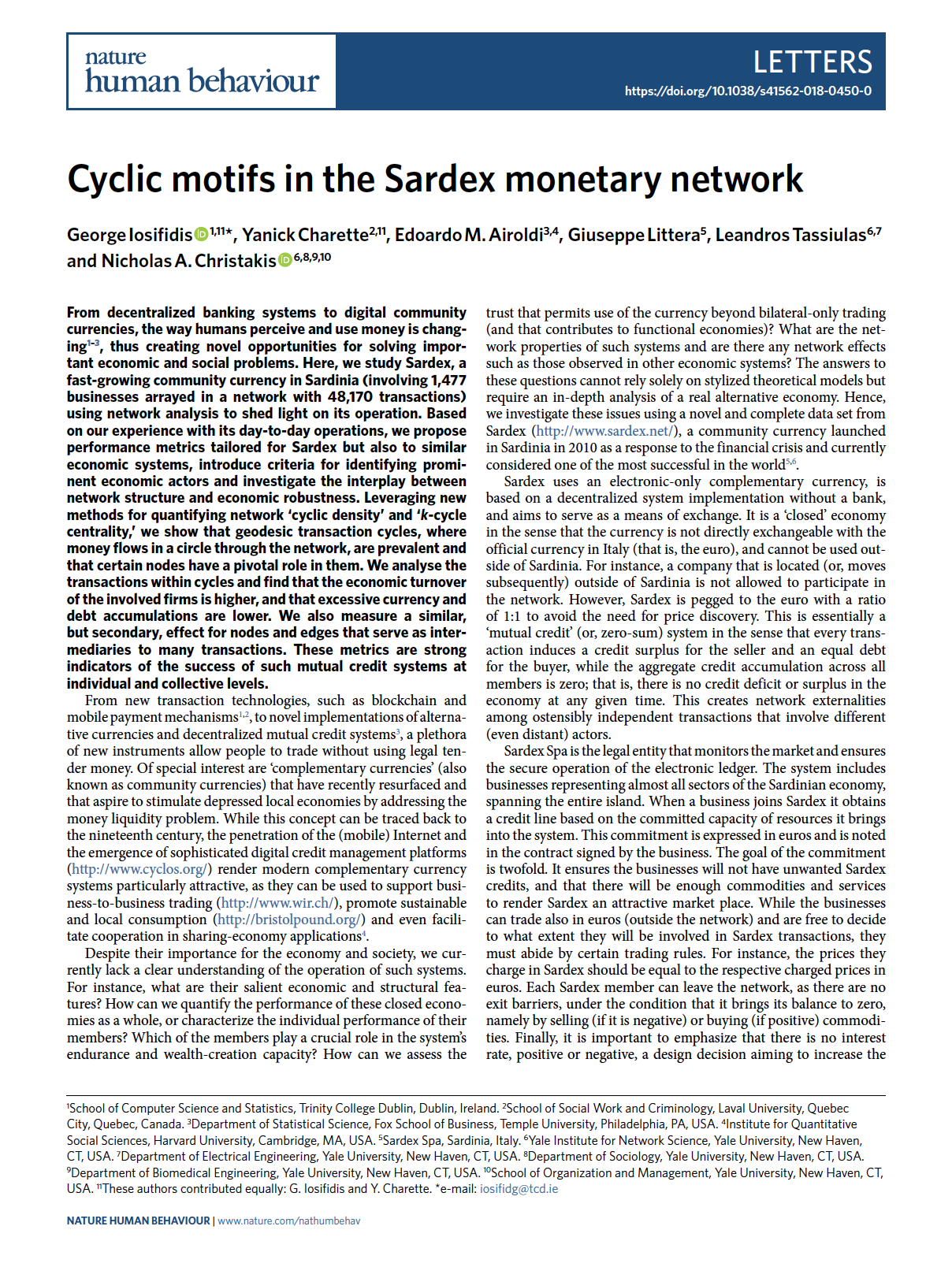
Cyclic motifs in the Sardex monetary network
Abstract
From decentralized banking systems to digital community currencies, the way humans perceive and use money is changing1,2,3, thus creating novel opportunities for solving important economic and social problems. Here, we study Sardex, a fast-growing community currency in Sardinia (involving 1,477 businesses arrayed in a network with 48,170 transactions) using network analysis to shed light on its operation. Based on our experience with its day-to-day operations, we propose performance metrics tailored for Sardex but also to similar economic systems, introduce criteria for identifying prominent economic actors and investigate the interplay between network structure and economic robustness. Leveraging new methods for quantifying network ‘cyclic density’ and ‘k-cycle centrality,’ we show that geodesic transaction cycles, where money flows in a circle through the network, are prevalent and that certain nodes have a pivotal role in them. We analyse the transactions within cycles and find that the economic turnover of the involved firms is higher, and that excessive currency and debt accumulations are lower. We also measure a similar, but secondary, effect for nodes and edges that serve as intermediaries to many transactions. These metrics are strong indicators of the success of such mutual credit systems at individual and collective levels
Citation:
G. Iosifidis, Y. Charette, E. Airoldi, G. Littera, L. Tassiulas, and N. A. Christakis, “Cyclic motifs in the Sardex monetary network,” Nature Human Behavior, (Oct 2018) DOI: 10.1038/s41562-018-0450-0